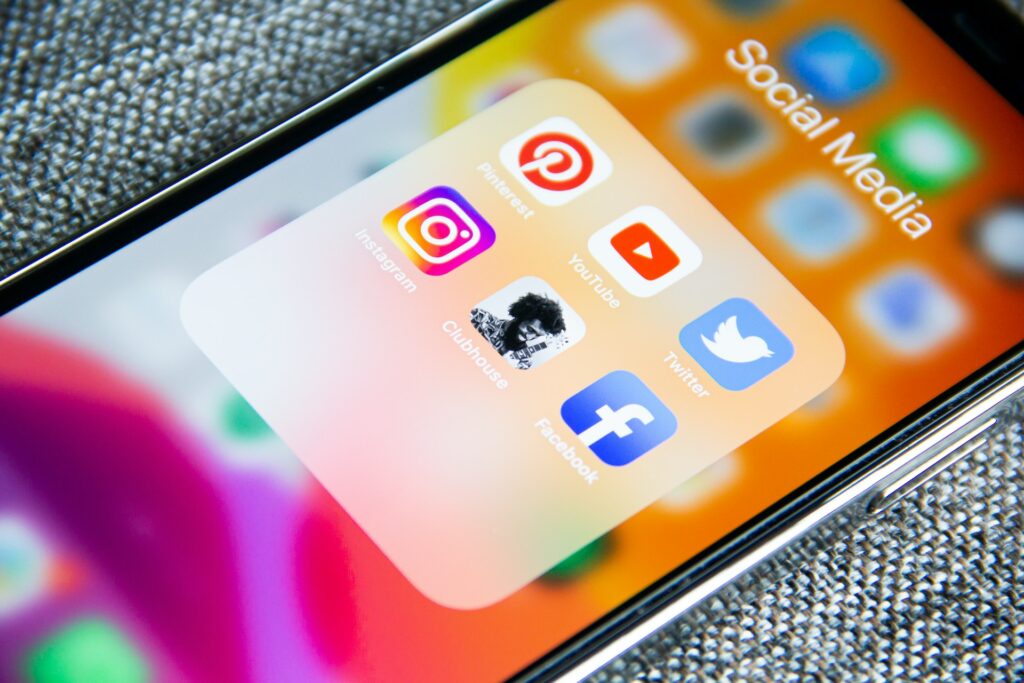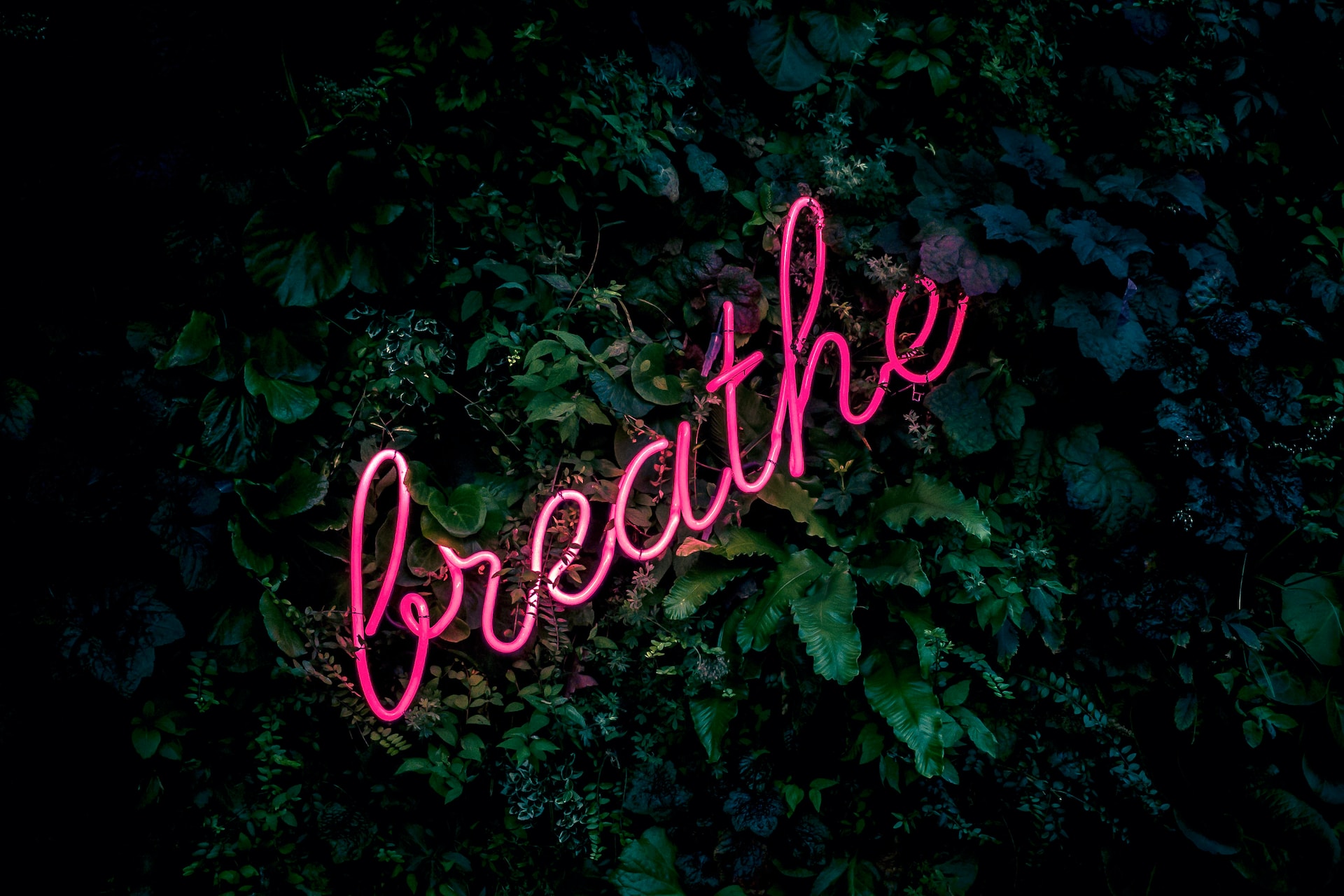Are you tired of feeling constantly glued to your phone or computer screen? Yearning for a break from the endless notifications and constant distractions? Look no further than “Digital Detox: How to Take a Break from Smart Gadgets.” In this article, you’ll discover practical and effective strategies to step back, unplug, and reclaim your precious time. Say goodbye to the digital overwhelm and hello to a healthier, more balanced lifestyle.

Reasons to Take a Digital Detox
In today’s hyper-connected world, it can be easy to feel overwhelmed and constantly bombarded with information. Taking a digital detox can offer numerous benefits for your mental and emotional well-being. Here are several compelling reasons why you should consider taking a break from smart gadgets:
Reducing stress and anxiety
Constant exposure to digital devices and the endless stream of notifications can lead to heightened stress levels and increased anxiety. Taking a break from technology allows you to disconnect from the constant noise and regain a sense of calmness. By reducing screen time, you give yourself the opportunity to focus on activities that promote relaxation and reduce stress, such as reading a book, practicing yoga, or spending time in nature.
Improving sleep quality
The blue light emitted by screens can disrupt your circadian rhythm and make it challenging to fall asleep at night. By taking a digital detox, you can create a bedtime routine that doesn’t involve scrolling through social media or watching videos on your phone. Engaging in relaxing activities, such as reading a physical book or taking a warm bath, can help signal to your body that it’s time to wind down and prepare for a restful night’s sleep.
Enhancing in-person relationships
Smartphones and other digital devices can be both a blessing and a curse when it comes to maintaining relationships. While technology allows us to stay connected with loved ones around the world, it can also interfere with our ability to be present in face-to-face interactions. By taking a break from digital distractions, you can fully engage with those around you, actively listen to conversations, and strengthen your in-person relationships.
Increasing productivity and focus
Constantly checking emails, scrolling through social media feeds, and being bombarded by notifications can significantly impact your productivity and ability to concentrate. Taking a digital detox provides an opportunity to free up your mind and eliminate distractions. With fewer interruptions, you can focus on tasks at hand, accomplish more, and experience a greater sense of satisfaction with your work.
Preparing for a Digital Detox
Before embarking on your digital detox journey, it’s important to prepare yourself for the challenges that lie ahead. Here are some steps you can take to make the process smoother and more successful:
Set a duration and make a plan
Decide on the duration of your digital detox, whether it’s a few days, a week, or a month, and establish clear goals for yourself during this time. Think about what you want to achieve and how you plan to fill your time without relying on digital devices. Creating a schedule and planning alternative activities will help you stay on track and make the most of your detox period.
Inform your friends and family
Let your friends, family, and colleagues know about your digital detox plans in advance. Explain to them why you’re taking this break and ask for their support. It’s essential to set boundaries and make it clear that you won’t be as accessible during this time. By involving your loved ones in your journey, you’ll feel more accountable and less tempted to sneak in some screen time.
Find alternative activities
Think about the activities that bring you joy and fulfillment outside of the digital realm. Whether it’s pursuing a hobby, exercising, or spending quality time with loved ones, make a list of alternative activities that you can engage in during your detox. Having a variety of options will help prevent boredom and keep you motivated throughout the process.
Make necessary arrangements
If you rely on your smartphone as an alarm clock or for other essential functions, make the necessary arrangements before starting your digital detox. Purchase an alarm clock so that you can leave your phone out of the bedroom, or find alternative ways to access the information and services you need without using your device. Being prepared and finding solutions to potential obstacles will make your digital detox more manageable.
Creating Physical Boundaries
Creating physical boundaries between yourself and your digital devices is crucial for a successful detox. Here are some strategies to help you establish boundaries and limit your screen time:
Designate gadget-free zones
Identify specific areas in your home or workspace where you will avoid using your digital devices. This could be your bedroom, dining area, or any space where you want to promote relaxation, quality time, or productivity. By designating these gadget-free zones, you create physical boundaries that remind you to refrain from checking your phone or using other devices in those areas.
Use an alarm clock instead of a smartphone
One of the most common habits that keeps us tethered to our screens is using our smartphones as alarm clocks. By replacing your smartphone with an alarm clock, you eliminate the temptation to reach for your device first thing in the morning and last thing at night. This simple change can have significant positive effects on your overall well-being and the quality of your sleep.
Leave devices out of the bedroom
Many of us are guilty of scrolling through social media or answering work emails from the comfort of our beds. However, this habit can disrupt your sleep patterns and prevent you from fully relaxing. Make it a habit to leave your devices out of the bedroom or create a designated charging area outside of your sleeping space. This will help you establish a clear boundary between your digital life and your personal sanctuary for rest and relaxation.
Managing Notifications
Notifications can be a constant source of distraction and can significantly impact your ability to focus and be present. Here are some strategies to help you manage notifications during your digital detox:
Disable non-essential notifications
Take a moment to evaluate the notifications you receive on your devices and determine which are essential and which are unnecessary. Disable notifications from apps and services that don’t require immediate attention or that can be checked at a later time. By limiting the number of notifications you receive, you’ll reduce the urge to constantly check your phone and be more present in the moment.
Enable do not disturb mode
Take advantage of the do not disturb mode on your smartphone or other devices. This feature allows you to silence all incoming calls, messages, and notifications for a specified period or until you manually turn it off. By enabling do not disturb mode during specific times or activities, you create dedicated periods of uninterrupted focus and reduce the temptation to check your phone.
Uninstall distracting apps
During your digital detox, consider uninstalling or temporarily disabling apps that tend to be distracting or time-consuming. Social media apps, games, and other leisure apps can easily consume hours of your day without you even realizing it. By removing these distractions, you free up your time for more meaningful activities and reduce the urge to mindlessly scroll through content.

Building Emotional Resilience
Taking a digital detox not only allows you to disconnect from the digital world but also provides an opportunity to reconnect with yourself and foster emotional resilience. Here are some strategies to help you build emotional resilience during your digital detox:
Practice mindfulness and meditation
Engaging in mindfulness and meditation practices can help you develop a greater sense of self-awareness and emotional well-being. Set aside time each day for meditation or try incorporating mindfulness techniques into your daily activities, such as mindful eating or mindful walking. These practices can help reduce stress, increase focus, and enhance your overall emotional resilience.
Engage in hobbies and creative outlets
During your time away from digital devices, rediscover the joy of engaging in hobbies and creative outlets. Whether it’s painting, playing a musical instrument, gardening, or writing, immersing yourself in activities that bring you joy and allow for self-expression can have a profound impact on your emotional well-being. These activities also serve as a healthy distraction from the digital world and can help you discover new passions or rediscover old ones.
Spend time in nature
Nature has a soothing and grounding effect on our well-being. Disconnecting from digital devices and spending time outdoors allows you to reconnect with the natural world and experience all the benefits it has to offer. Whether it’s taking a walk in the park, hiking in the mountains, or simply sitting in a garden, spending time in nature can reduce stress, improve mood, and promote emotional resilience.
Connect with loved ones offline
During your digital detox, make a conscious effort to connect with loved ones offline. Arrange meetups, plan activities together, or simply spend quality time engaging in conversation without the distractions of screens. Building strong connections and nurturing relationships in the offline world strengthens your emotional resilience and provides a support system outside of the digital realm.
Maintaining Mental Well-being
In today’s digital age, it’s essential to prioritize your mental well-being and establish healthy boundaries when it comes to technology. Here are some strategies to help you maintain your mental well-being during and after your digital detox:
Limit social media usage
Social media can be a double-edged sword, offering both connection and comparison. While staying connected with friends and family is important, excessive social media usage can have detrimental effects on your mental health. Set limits on the amount of time you spend on social media platforms and consider unfollowing accounts that make you feel inadequate or trigger negative emotions.
Set boundaries for online communication
During your digital detox, consider setting boundaries for online communication. Establish specific time slots for checking emails or responding to messages and avoid constantly being available and responding immediately. Communicate your boundaries and expectations to colleagues, clients, and friends, so they can respect your need for offline time.
Avoid constantly checking emails or work-related apps
Constantly checking work-related emails or apps can blur the line between personal and professional life, leading to increased stress and burnout. Set aside dedicated periods for checking and responding to work-related communications. Outside of those periods, avoid constantly checking emails or engaging in work-related activities, allowing yourself to fully disconnect and recharge.
Seek professional help if needed
If you find that your digital detox brings up significant emotional challenges or exacerbates existing mental health issues, don’t hesitate to seek professional help. A mental health professional can provide guidance and support as you navigate the complexities of the digital world and its impact on your well-being. Remember, there is no shame in seeking help when needed.

Dealing with FOMO (Fear of Missing Out)
Fear of Missing Out (FOMO) is a common phenomenon in our increasingly digitized world. Here are some strategies to help you manage FOMO during your digital detox:
Shift focus to the present moment
When experiencing FOMO, remind yourself to focus on the present moment and the experiences that are unfolding before you. Practice gratitude for what you have and the opportunities available to you in the offline world. By shifting your focus away from what you might be missing online, you can fully appreciate and make the most of the experiences happening right in front of you.
Cultivate gratitude and contentment
Practicing gratitude can help combat feelings of FOMO. Take time each day to reflect on the things you are grateful for, whether it’s personal relationships, achievements, or simple moments of joy. By cultivating gratitude and contentment, you’ll develop a greater sense of fulfillment and reduce the desire to constantly seek validation or stimulation through digital means.
Realize that life exists beyond the virtual world
It’s important to remind yourself that life exists beyond the virtual world. The experiences, connections, and opportunities that matter most are often found in the realm of face-to-face interactions and real-life experiences. Embrace the richness and complexity of the offline world, and remember that the digital world is merely a tool for enhancing and facilitating those experiences.
Practice self-reflection
FOMO can sometimes be a reflection of deeper insecurities or unmet needs. Take the time during your digital detox to engage in self-reflection and explore the root causes of your FOMO. Are there areas in your life where you feel unfulfilled or lacking? By identifying these areas, you can take proactive steps to address them and find more fulfillment in offline experiences.
Detoxifying Your Digital Space
As you embark on your digital detox, it’s important to detoxify your digital space to create a healthier relationship with technology. Here are some steps you can take to declutter and organize your digital devices:
Remove unnecessary apps and bookmarks
Go through your smartphone, tablet, or computer and uninstall or delete apps and bookmarks that you no longer use or that don’t align with your goals and values. Removing unnecessary digital clutter will help minimize distractions and streamline your digital experience.
Organize and declutter your digital files
Take the time to organize your digital files, photos, and documents. Create folders with clear labels and delete or back up any files that are no longer needed. By decluttering and organizing your digital space, you’ll have an easier time finding the files you need and feel more in control of your digital environment.
Unsubscribe from email newsletters and mailing lists
If your email inbox is filled with newsletters and mailing lists that you never read or that no longer serve you, take the time to unsubscribe from them. This will help reduce inbox clutter and minimize the temptation to constantly check your email for new updates or promotions.
Clean up your social media accounts
Review your social media accounts and consider unfollowing accounts that don’t align with your interests or values. Curate your feed to include content that is meaningful and inspiring to you. By cleaning up your social media accounts, you’ll create a more positive and uplifting digital environment that promotes your well-being.

Finding Balance in the Digital Age
Taking a digital detox is not about completely disconnecting from the digital world but rather finding a healthy balance between the digital and offline realms. Here are some strategies to help you find that balance:
Establish screen-free times during the day
Designate specific periods during the day when you commit to being screen-free. This could be during meals, in the morning or evening, or any other time that works best for you. Use these screen-free times to engage in meaningful activities, connect with loved ones, or simply be present in the moment.
Allocate designated gadget-free days
Consider setting aside one day per week as a gadget-free day. Use this day to fully disconnect from all digital devices and dedicate your time to activities that bring you joy, relaxation, or personal growth. It’s amazing how refreshing and invigorating a day without screens can be.
Set realistic limits for gadget usage
Establish realistic limits for the amount of time you spend using gadgets each day. Whether it’s setting a time limit for social media, allocating specific periods for work-related tasks, or prioritizing offline activities, finding a balance that works for you is key. Be mindful of your gadget usage and ensure that it aligns with your goals and values.
Create a healthy technology routine
Develop a healthy technology routine that supports your well-being. This could include setting aside time each day for mindfulness practices, physical exercise, or engaging in activities that promote personal growth. By integrating these activities into your routine, you can strike a healthy balance between technology and real-life experiences.
The Importance of Staying Consistent
While a one-time digital detox can be rejuvenating, it’s important to make it a regular part of your lifestyle to truly reap the long-term benefits. Here’s why staying consistent with your digital detox is crucial:
Create accountability and support systems
Share your digital detox journey with friends, family, or members of support groups who have similar goals. By creating accountability and support systems, you’ll be more motivated to stick to your digital detox and share your progress and challenges along the way.
Reward yourself for reaching milestones
Celebrate your achievements and milestones throughout your digital detox journey. Reward yourself for reaching goals, whether it’s completing a week without social media or reducing screen time by a certain percentage. These rewards can serve as positive reinforcement and help you stay motivated and committed to your digital detox.
Track progress and reflect on the benefits
Keep a journal or use a tracking app to record your progress during your digital detox. Take note of any positive changes you experience, such as improved sleep, reduced stress, or increased productivity. Reflecting on the benefits of your digital detox will reinforce the importance of staying consistent and encourage you to continue incorporating digital breaks into your lifestyle.
Make the digital detox a regular part of your lifestyle
Ultimately, the goal of a digital detox is to create a healthier and more balanced relationship with technology. Make your digital detox a regular part of your lifestyle, whether it’s incorporating weekly gadget-free days or taking periodic breaks from social media. By continually reassessing your relationship with technology and making adjustments as needed, you can maintain the benefits of your digital detox in the long run.
Taking a digital detox is a powerful way to enhance your overall well-being in the digital age. By reducing stress, improving sleep quality, enhancing in-person relationships, and increasing productivity and focus, a break from smart gadgets can have a profound impact on your life. By following the steps outlined in this article, you can prepare for a successful digital detox, create physical boundaries, manage notifications, build emotional resilience, detoxify your digital space, find balance, and stay consistent. Embrace the opportunity to disconnect from the digital world, reconnect with yourself and loved ones, and fully experience the richness of the offline world. Your mind, body, and soul will thank you for it.
